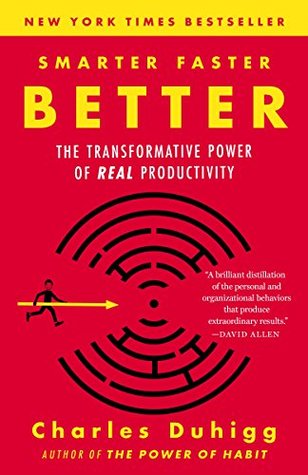More on this book
Community
Kindle Notes & Highlights
Read between
January 5 - January 5, 2024
Trends in Cognitive Sciences in 2010.
Problems and Perspectives in Management in 2012.
Project Oxygen
Project Aristotle.
Study after study shows that while psychological safety might be less efficient in the short run, it’s more productive over time.
1 Project Oxygen found that a good manager (1) is a good coach; (2) empowers and does not micromanage; (3) expresses interest and concern in subordinates’ success and well-being; (4) is results oriented; (5) listens and shares information; (6) helps with career development;
(7) has a clear vision and strategy; (8) has key technical skills.
But as automation becomes more common, the risks that our attention spans will fail have risen.
Cognitive tunneling
“reactive thinking.”
Reactive thinking, in a sense, outsources the choices and control that, in other settings, create motivation.
One is a propensity to create pictures in their minds of what they expect to see. These people tell themselves stories about what’s going on as it occurs. They narrate their own experiences within their heads. They are more likely to answer questions with anecdotes rather than simple responses. They say when they daydream, they’re often imagining future conversations. They visualize their days with more specificity than the rest of us do.
“creating mental models.”
Cognitive tunneling and reactive thinking occur when our mental spotlights go from dim to bright in a split second. But if we are constantly telling ourselves stories and creating mental pictures, that beam never fully powers down. It’s always jumping around inside our heads.
People who know how to manage their attention and who habitually build robust mental models tend to earn more money and get better grades.
Qantas Flight 32 is taught in flight schools and psychology classrooms as a case study of how to maintain focus during an emergency.
In 2001, a group of computer programmers had gathered at a ski lodge in Utah to write a set of principles, called the “Manifesto for Agile Software Development,”
It quickly revolutionized software development and now is the standard methodology among many tech firms.
The lessons on probabilistic thinking offered by the GJP had instructed participants to think of the future not as what’s going to happen, but rather as a series of possibilities that might occur. It taught them to envision tomorrow as an array of potential outcomes, all of which had different odds of coming true.
GJP’s probabilistic training was to show people how to turn their intuitions into statistical estimates.
This is probabilistic thinking. It is the ability to hold multiple, conflicting outcomes in your mind and estimate their relative likelihoods.
To become better at predicting the future—at making good decisions—we need to know the difference between what we hope will happen and what is more and less likely to occur.
Our assumptions are based on what we’ve encountered in life, but our experiences often draw on biased samples. In particular, we are much more likely to pay attention to or remember successes and forget about failures. Many of us learn about the business world, for instance, by reading newspapers and magazines.
Many successful people, in contrast, spend an enormous amount of time seeking out information on failures. They read inside the newspaper’s business pages for articles on companies that have gone broke. They schedule lunches with colleagues who haven’t gotten promoted, and then ask them what went wrong. They request criticisms alongside praise at annual reviews. They scrutinize their credit card statements to figure out why, precisely, they haven’t saved as much as they hoped. They pick over their daily missteps when they get home, rather than allowing themselves to forget all the small
...more
The people who make the best choices are the ones who work hardest to envision various futures, to write them down and think them through, and then ask themselves, which ones do I think are most likely and why?


